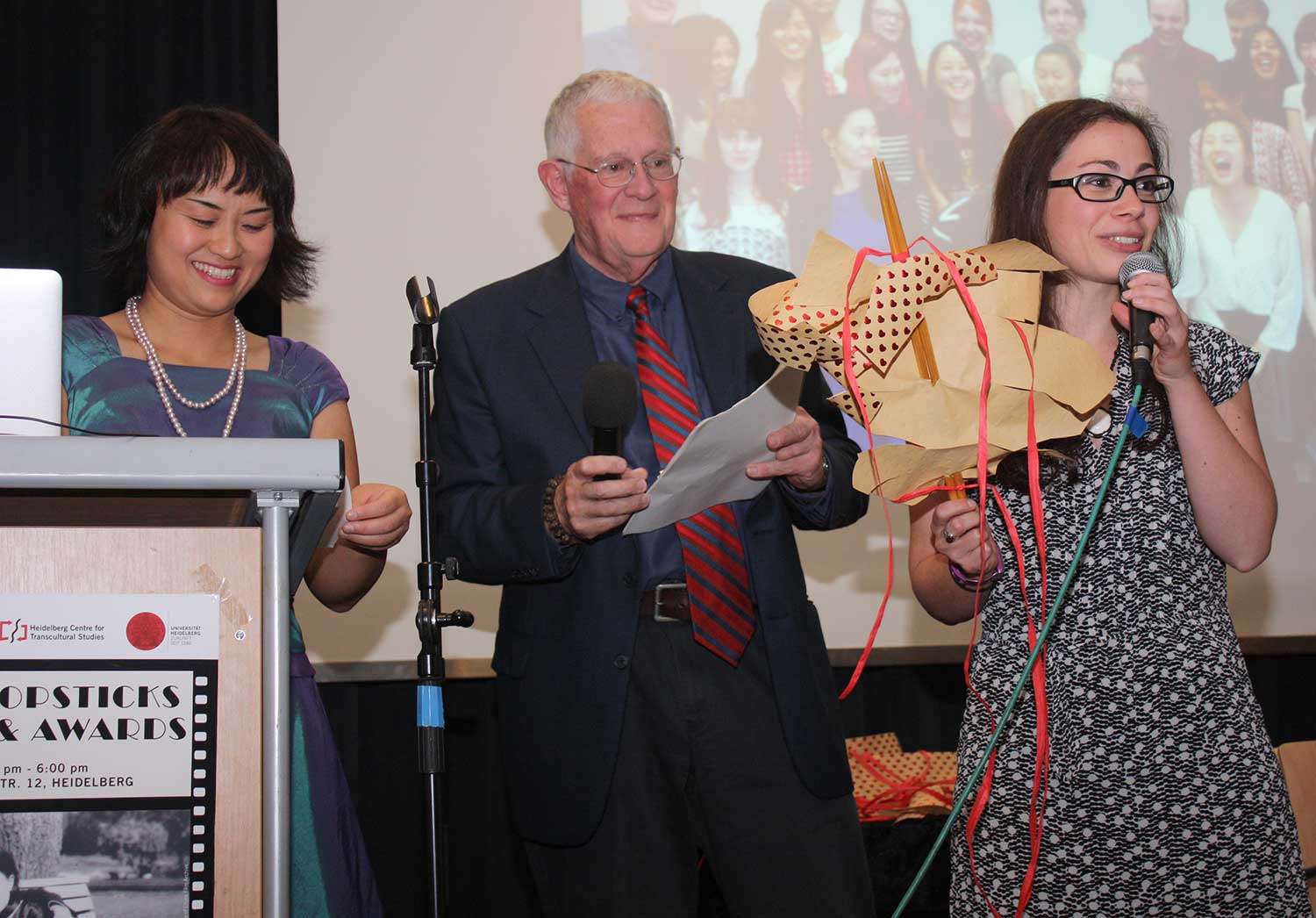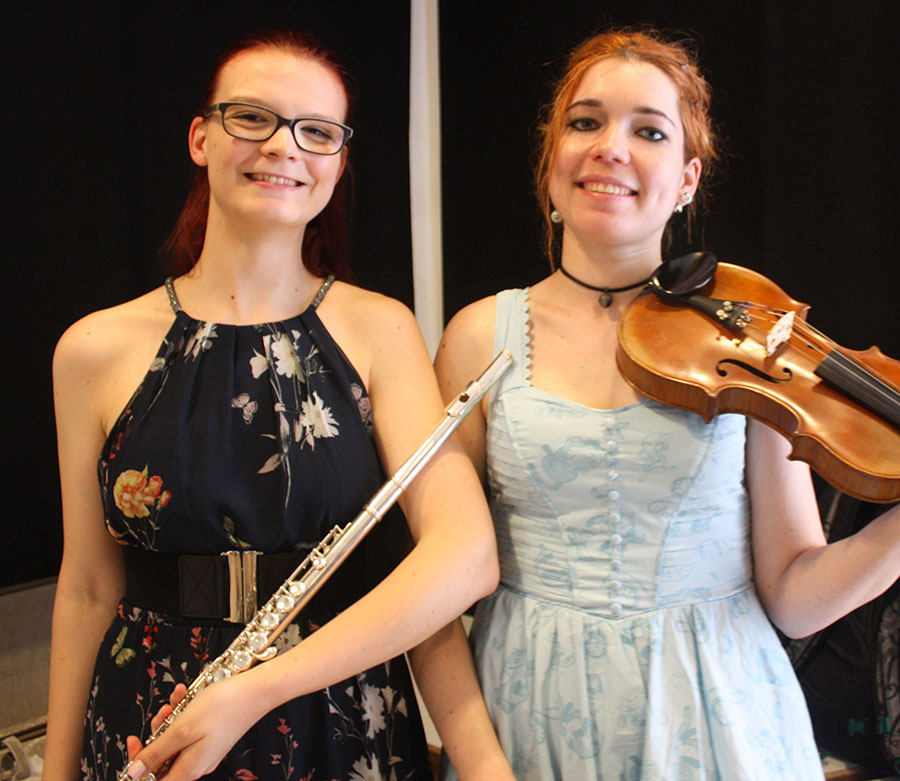UC San Diego Professor Takes Novel Approach to Teaching History
Published Date
By:
- Cynthia Dillon
Share This:
Article Content

Prof. Pickowicz presented awards to winners in 10 different categories, including Best Actress, Best Cinematography, and Best Picture. Photo by Emily Mae Graf
From the U.S. to China to Germany and beyond, UC San Diego Distinguished Professor of Chinese History Paul Pickowicz takes a novel approach to teaching history—he transforms students into experienced filmmakers. For more than two decades, Pickowicz has enlivened history with the use of film. As part of his Humboldt Foundation Award, Pickowicz recently taught his history/film course to a group of 24 students from all over the world at the University of Heidelberg in Germany. The course examined the global city of Shanghai during the 1920s and 1930s from the historical angle of the Chinese silent film era.
During the 10-week class, students examined the social, political and economic problems of the times through the lens of 15 silent-era Chinese films. They analyzed these visual sources to identify themes related to social problems, political power, global cultural influences on traditional Chinese culture, and the role of money in the economy.
The class was made up of both humanities students and non-humanities students taking an elective course. Students worked in groups to develop and complete the final assignment—a 20-minute, black and white silent film demonstrating their research. None of the students had ever seen the 15 classic Chinese films or taken a film course before. Pickowicz challenged the students further with a couple of rules—they could spend no money, and they had to abide by the thematic and aesthetic frameworks characteristic of the classic Chinese films they watched in class.
“I have been teaching this course for over 20 years in multiple countries and no group has ever failed to turn in a film,” said Pickowicz proudly, admitting that production pressures definitely mount toward the end of the course. The groups work in secret, which adds to the drama of the production process. “Sometimes there are group conflicts, but I insist that the students work it out together. It is really fun to see the films that result.”
Pickowicz periodically consults with each group about the progress of its film. In those meetings, students must make the case for why their project qualifies as a film that could have been made during the 1920s and 1930s in Shanghai.
One film called, “The Gift Box,” was directed by a German student who used three student actors from the class. It captured the mood of the time with shots of period buildings and appropriate time-specific costumes. Thematically it revealed social class tensions and urban/rural displacements that plagued society at the time.
“They shot three to four times more footage than could be used in a 20-minute film,” noted Pickowicz, adding that the groups also have to edit their films and download them to a DVD.

University of Heidelberg students Rebbecca Hussman (left) and Katrin Kowalski (right) won Golden Chopsticks for the original music they wrote and performed live for their film, "Crossroad." Photo by Emily Mae Graf
Student creativity is given multiple outlets in this project. For example, Pickowicz said that one group in Germany decided to write and perform live music rather than use recorded music in its film.
“It won the Best Music Award,” said Pickowicz.
Faculty judges from different academic departments assess the films and determine prizes. The films are screened for an audience of 300 who attend a ceremony that Pickowicz calls, “The Golden Chopsticks Awards Gala.” The judges ask questions after each film is viewed and then they have 30 minutes to decide the winners. During their deliberation, students show hilarious filmmaking bloopers to the audience.
“Ultimately this is a history course in which students literally get to show off their learning,” said Pickowicz. “The students learn visual culture research methodologies and discover that interesting issues surface in film sources that may not be so apparent in the traditional sources scholars use.”
Pickowicz, who is retiring at the end of fall quarter, is donating his more than 20-years of course related materials, including a complete collection of student-made films, to the UC San Diego Library. Fortunately, starting in Spring Quarter 2017 he will continue to teach the course (HIEA 133, Cultural History of 20th Century China) once a year for three years as an Emeritus Professor. A film made locally by UC San Diego students called, “Ocean Embrace,” demonstrates the quality of work students achieve in the course.
“In the next couple of years my goal is to work with the library to organize the collection in ways that will make it easier for others to use the material,” said Pickowicz.
Share This:
Stay in the Know
Keep up with all the latest from UC San Diego. Subscribe to the newsletter today.



